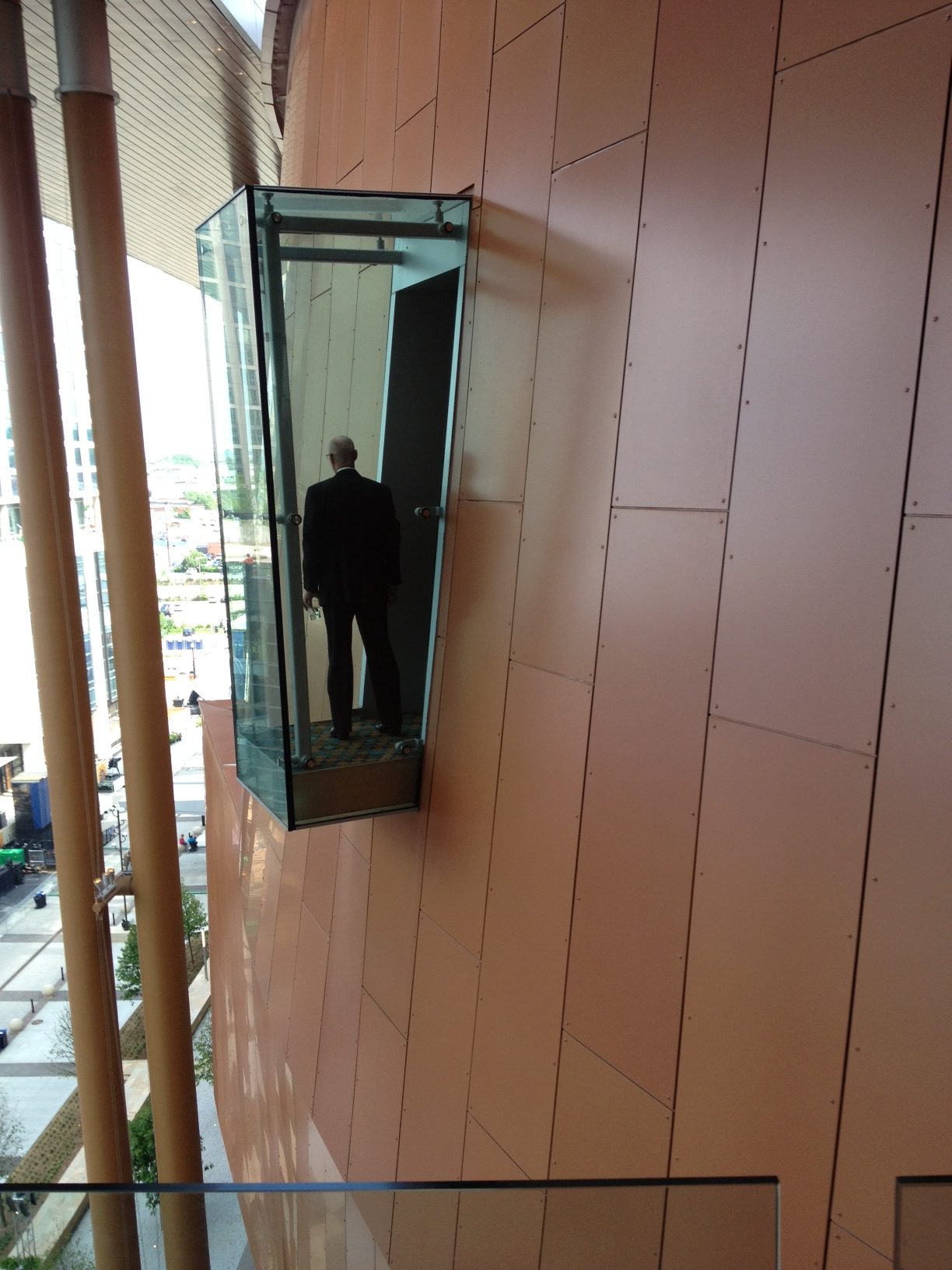A “friend” of mine, Sara, is a bartender in a neighborhood Atlanta restaurant. She is a parenthetical “friend” because she pretends to care about me for an hour or so in exchange for a cash transaction—which sounds somewhat similar to another “profession” but with the physical barrier of a bar counter.
Anyway, I’ve watched Sara shake or pour around two drinks a minute on average, busy nights—120 drinks an hour, or about $2,000 an hour of income to the house. I’ll guess her paycheck is around $40 an hour, so that’s a 50:1 margin. Someone’s counting cash at home. I hope Sara doesn’t ever read this- it’ll come off like Communist agitprop.
Sara makes a commodity however. While they are my martinis, there are probably ten million like it shaken or stirred all across America every night. There is little custom, or “bespoke” in the transaction, save the choice or olive or twist, shaken or stirred, dry or dirty. Very few transactions in our lives are bespoke, yet the profession of architecture demands one every time you step up to the plate. There are lucrative exceptions, however. I once had the privilege of working for a Pritzker Prize Architect with a highly formalized aesthetic. There was no marketing department and no library of possible material samples to parade in front of clients—what need would we have of such things. It was as if a client had eighty thousand dollars in his wallet and a choice. He could commission a metal worker friend of his cousin to come up with design visions for a luxury car—with a cash advance, or The Wallet could walk into a Mercedes Benz dealer and drive away in an all white E class. Most rational people would choose the Benz.
While I’m typing and drifting from architecture to cars, the typical automobile takes a team of 1000 engineers and stylists around five years to realize a new car model, that’s eleven million man-hours. Amazingly, most upper end marques take about 50 hours to build per unit, thanks to Mr. Ford’s innovation of the production line. My previous ride, a Spartanburg North Carolina BMW Z3, was one of the 300,000 built from 1996 to 2002. At an average price of $45,000, that line yielded over thirteen billion dollars to the Munich blue and white spinning propeller brand. Much like Sara’s martini, there was a tight range of bespoke in the choice—mostly paint and leather color, manual or automatic. I know of no one who drives a custom car they designed, except Batman.
 It’s the underlying expectation of my profession, as one of the arts, that every commission is a unique, bespoke, response to a client’s wallet or aspiration, Prtitzker formalists like Meier aside. The convention center we designed in Nashville a few years ago will probably be the best moment of my career. Inspired by the rich musical legacy of the town, we envisioned ourselves inside mandolins, pianos and fiddles in shaping the interior spaces and detailing the building’s public face. It’s a raging civic success that has engendered the growth of an entire new district of downtown Nashville. A cross country team of architects, interior designers and engineers logged over 250,000 design man hours over the life of the project. The construction team of laborers, engineers and project managers clocked in at over six million man hours over a three year effort. A full fifteen percent of those construction side hours were racked up in the production of Shop Drawings, antiquated but necessary sets of drawings by fabricators that confirm the architects design intent. For me, what’s interesting is the labor investment in making a single, bespoke, piece of architecture, a one-off never to be built again, versus 300,000 units of my beloved Z3. The difference is profound.
It’s the underlying expectation of my profession, as one of the arts, that every commission is a unique, bespoke, response to a client’s wallet or aspiration, Prtitzker formalists like Meier aside. The convention center we designed in Nashville a few years ago will probably be the best moment of my career. Inspired by the rich musical legacy of the town, we envisioned ourselves inside mandolins, pianos and fiddles in shaping the interior spaces and detailing the building’s public face. It’s a raging civic success that has engendered the growth of an entire new district of downtown Nashville. A cross country team of architects, interior designers and engineers logged over 250,000 design man hours over the life of the project. The construction team of laborers, engineers and project managers clocked in at over six million man hours over a three year effort. A full fifteen percent of those construction side hours were racked up in the production of Shop Drawings, antiquated but necessary sets of drawings by fabricators that confirm the architects design intent. For me, what’s interesting is the labor investment in making a single, bespoke, piece of architecture, a one-off never to be built again, versus 300,000 units of my beloved Z3. The difference is profound.
The value of “bespoke” has some interesting extremes.
Despite the recent claims of plagiarism, Led Zeppelin’s Stairway to Heaven probably most symbolizes a “bespoke” anthem to the culture and time of its making. The song was written and recorded over a 15 month stretch starting in the Spring of 1970 in a cottage in Bron-Yr-Aur Wales. I’ll guess Plant and Page put in 800 man hours leading up to the studio recording, given the pharmaceuticals of the time. In the ensuing 48 years, it’s made the group an estimated $578 million dollars in royalties, albums and downloads. That’s $722,500 per hour, considerably the reverse of Sara’s hourly dilemma.
Michelangelo, in contrast, labored four years on the Sistine Chapel ceiling starting in 1508 for which he was paid 3000 ducats, equating to approximately 78,000 dollars today, or around $9.75 an hour—roughly the minimum wage in Alaska.



